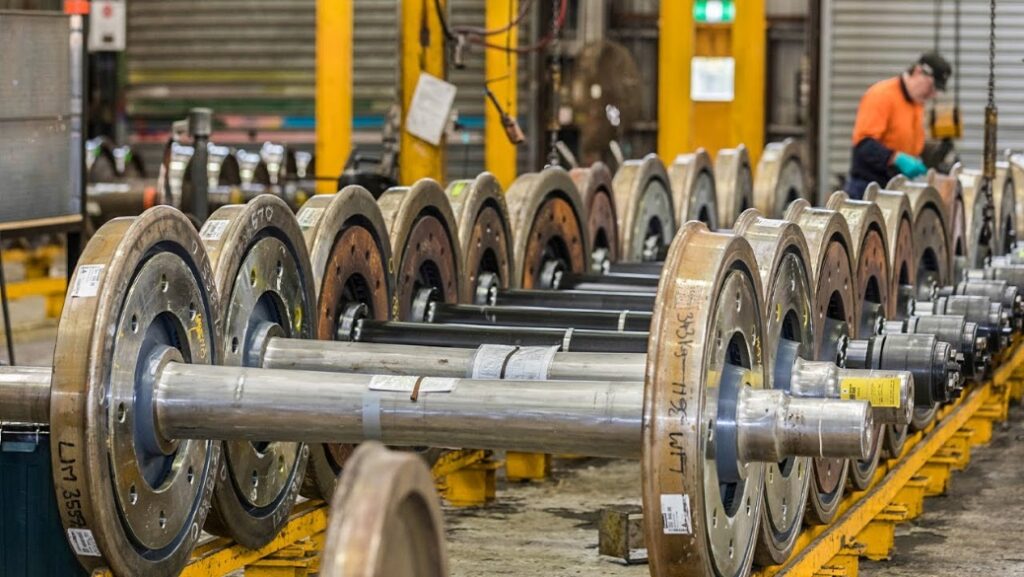I am currently working as a Postgraduate Researcher at the University of Leeds, where I am actively involved in research activities. Prior to this, I successfully completed my master's degree through the renowned Erasmus Mundus joint program, specializing in Tribology and Bachelor's degree in Mechanical Engineering from VTU in Belgaum, India. Further I handle the social media pages for Tribonet and I have my youtube channel Tribo Geek.
Tribology in Rail wheel
Table of Contents
Introduction
The study of tribology at the wheel-rail interface holds immense significance in both scientific and industrial realms, primarily due to its critical implications for safety and economic considerations. An intriguing observation from an analysis of railway traffic data in the UK and Sweden revealed a noteworthy correlation between incidents, particularly longer braking distances, and specific weather conditions like precipitation and significant temperature fluctuations. Tribological systems can be classified into open and closed systems. Closed systems, like gearboxes, have sealed environments that allow better control over friction, wear, and lubrication, while also preventing the emission of sound and particulates. They use lubricants to cool contact points and transport heat away. On the other hand, open systems, such as wheel-rail and block brake-wheel contacts in rail vehicles, are exposed to external factors like dirt, humidity, and rain. They lack shielding, leading to emissions of sound and particles from wear products. Heat dissipation in open systems occurs through the surrounding air [1].

Figure-1 Wheel and axel of rail system [2]
Tribological problems in rail wheel
Variations in surface topography, hardness, and plastic deformation give rise to diverse friction and wear properties of interacting surfaces. These characteristics are established during manufacturing and influenced by the chosen materials and bulk substances. Additionally, friction and wear processes are impacted by the presence of applied or natural lubrication, as well as contaminants. Natural lubricants consist of rain, snow, humidity, and biological matter like leaves. Contaminants, in the form of airborne or lubricant-borne particles, can also enter the contact. Furthermore, the interaction between surfaces results in the emission of sound from friction processes, along with airborne or lubricant-borne wear particles. The railway vehicle’s working environment experiences seasonal changes, and it may encounter various contaminants such as leaves and snow. The temperature and humidity levels significantly impact the open system wheel-rail contact, consequently affecting the performance of railway vehicles, including factors like braking distance and acceleration [1].

Figure-2 Rail wheel tribological issues [3]
Adhesion and friction in Rail wheel system
Wheel-rail adhesion refers to the tangential force between the wheels and rails, representing the maximum friction between them.Essentially, locomotive and railroad manufacturers are highly concerned about adhesion since it limits the available traction power. When the adhesion force matches the friction coefficient at the wheel-rail contact, the entire contact reaches a pure sliding state, causing the wheels to spin on the track and halting the train’s movement. In railway operations, achieving an appropriate friction coefficient is crucial. If the value is too low, it causes inadequate adhesion during tracking and braking, leading to schedule disruptions and longer stopping distances. Conversely, if the friction coefficient is too high, it gives rise to a different set of issues, such as rapid surface damage, squeal noise, and significant emissions of particulate matter. Considering the close connection between wheel-rail adhesion and friction, both aspects are discussed here in the context of an open system [4].

Figure-3 Rail wheel adhesion caused by leaves [5]
Wear in Rail wheel system
The wheel-rail contact involves a rolling-sliding motion, leading to four primary types of wear: rolling contact fatigue, abrasive wear, adhesive wear, and corrosive wear. These wear mechanisms significantly influence the contact between the wheel and rail in an open system and will be discussed subsequently. It is important to acknowledge that the wear process at the wheel-rail contact is typically influenced by a combination of two or more wear mechanisms, rather than being dominated by a single one [1].

Figure-4 Surface fatigue in rail wheel surface [7]
Reference
[2] https://www.youtube.com/watch?v=pij4V-8kNNE

Be the first to comment